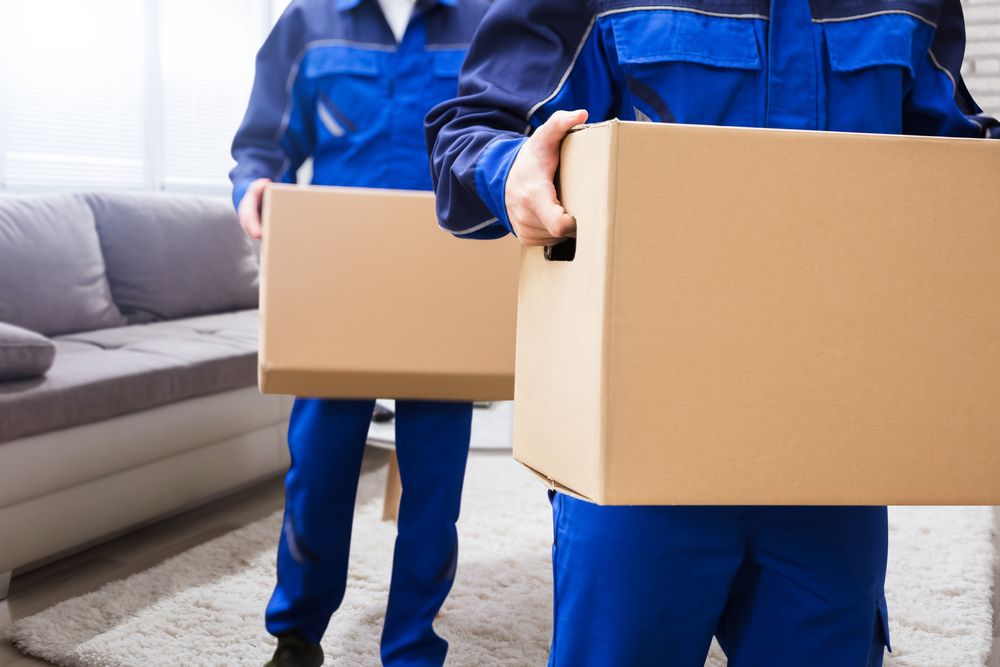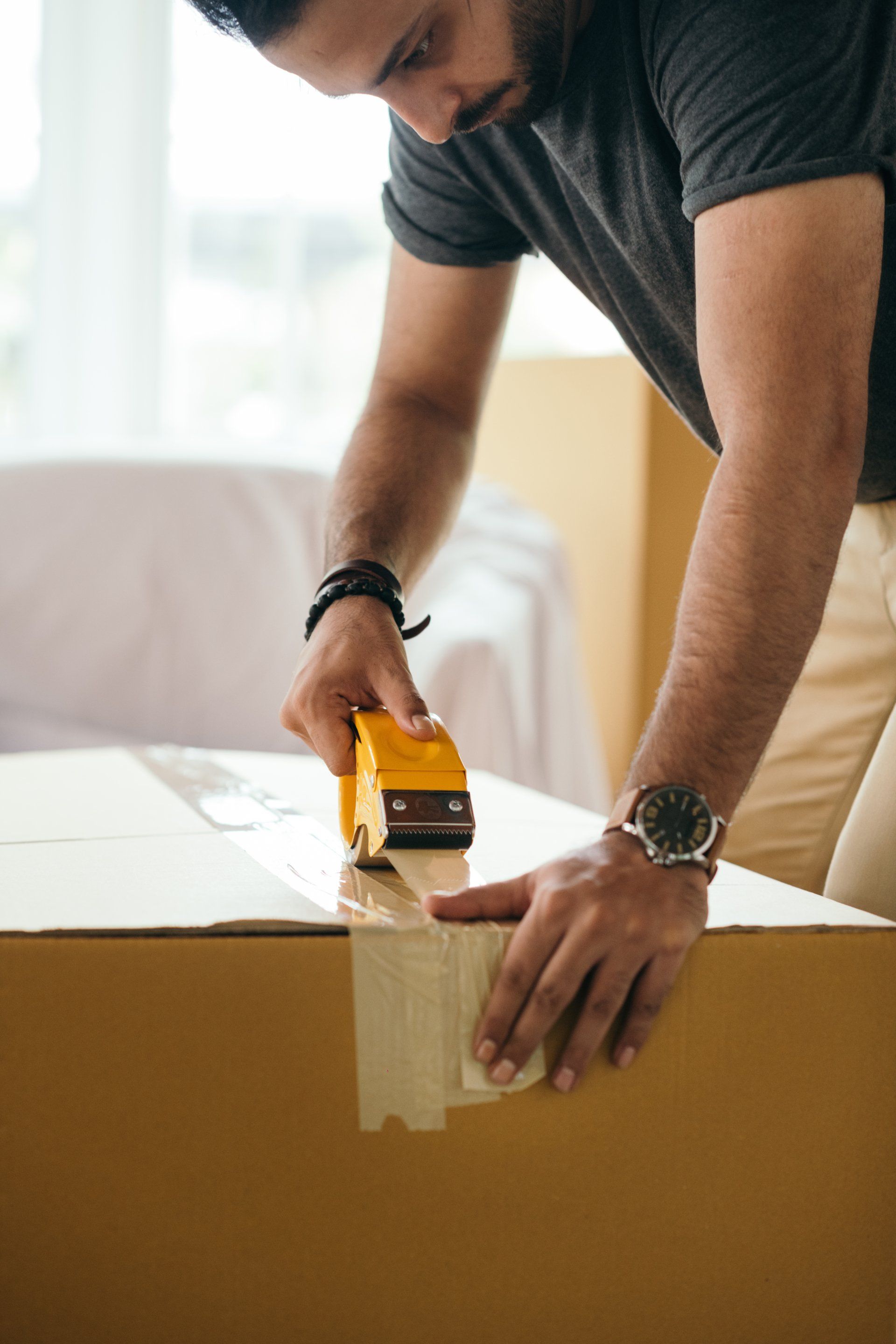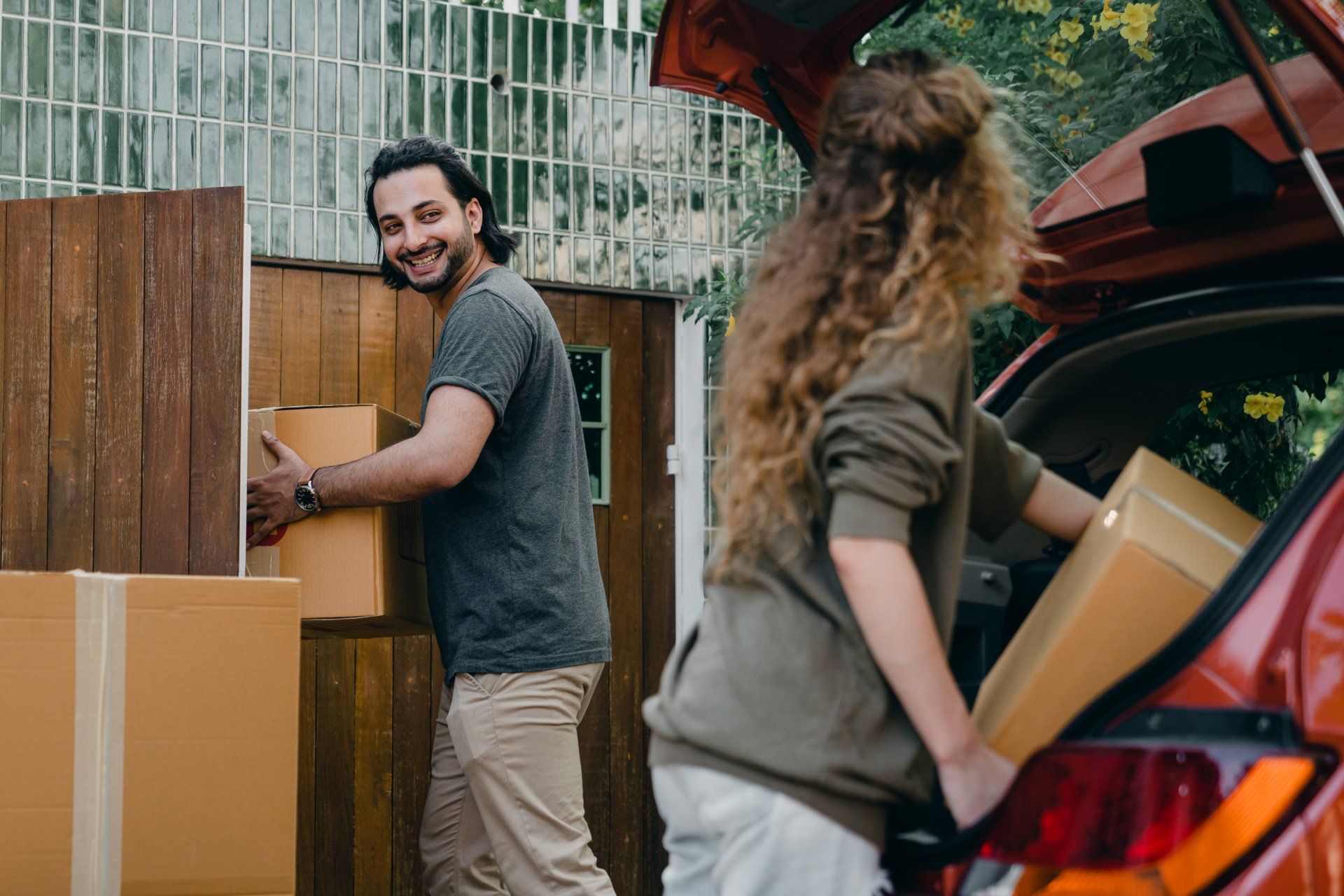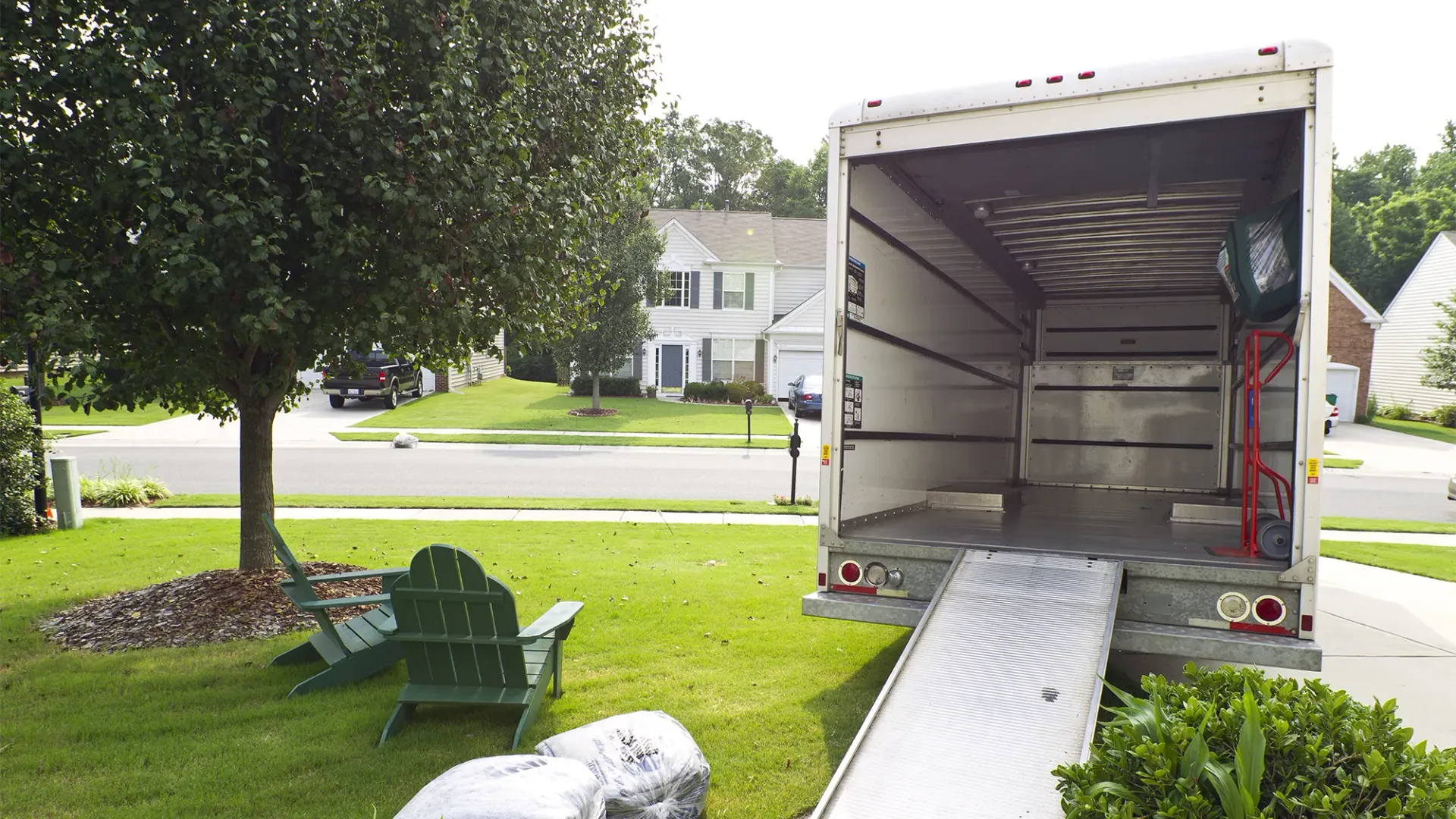Long Distance Moving Packages Starting @ $1899!
Long Distance Household Moving
Moving home is one of the most grueling tasks known to man. From packing up all your belongings, organizing a moving van and ensuring everything arrives in one piece - it can be an insurmountable challenge. But when you are tasked with long distance household moving, the work involved multiplies exponentially!
Transporting all your worldly possessions from state-to-state or even across countries requires a great deal of planning and effort. You need to consider how far you’re travelling, who will take care of transportation and whether you should hire professional movers for assistance.
Long distance household moving can seem like an overwhelming experience but there are steps that can make this process much smoother. In this article, we explore what needs to be taken into consideration before embarking on such a journey as well as best practices for making sure your move goes off without a hitch!
Assessing The Distance Of Your Move
Long distance household moving can seem like an overwhelming experience but there are steps that can make this process much smoother. In this article, we explore what needs to be taken into consideration before embarking on such a journey as well as best practices for making sure your move goes off without a hitch!
When it comes to long distance household moving, the first step is assessing the distance of your move. This can be done by using a variety of resources and tools available from companies that specialize in US household moving services. If you are looking for an experienced company with a proven track record for successful moves, there are several reputable ones to choose from.
One way to assess the distance of your move is through online calculators offered by many household moving companies. These will help determine how far you're going, as well as provide cost estimates based on weight and size of items being moved. They also offer helpful advice on planning ahead and budgeting for extra costs associated with long-distance relocations.
Another useful tool is a packing list which provides information about what should be included in each box or container when packing up belongings for the journey. This helps avoid unnecessary costs due to misplaced items down the line. All these steps taken together will ensure a smooth transition when relocating across state lines - no matter how far away the destination might be!
By taking time to understand all aspects of long distance household moving, such as assessing distances and understanding relevant laws, you'll make sure everything runs smoothly during this exciting new chapter in life.
Understanding Long Distance Moving Laws
As daunting as it may seem, understanding long distance moving laws can be a surprisingly easy task. To help you make sense of the process, let's break down what you need to know in three simple steps.
Let's get into the nitty-gritty details: As is often the case with regulations and rules, there are multiple layers to consider when it comes to cross-state moves. But fear not! Here is an overview of some of those key elements:
- Licensing & registration: All movers who transport items across state lines must have their own Federal Motor Carrier Safety Administration (FMCSA) number. Additionally, many states will require additional licensing or permits for intrastate moves – so always check your local requirements before signing any contracts.
- Insurance & liability protection: Most reputable movers should provide insurance coverage options for your belongings during transit – this helps keep both parties safe from any potential damages due to unforeseen events like accidents or natural disasters.
- Pricing structure: Long distance moves can include different costs than local ones – such as fuel charges and storage fees - so make sure that you understand exactly what services are included in the quoted price before making any commitments.
Another important factor to consider when looking at long distance moving laws is customer service standards. These regulations exist to ensure that all customers receive quality care throughout the entire relocation process; including things like communication protocols, dispute resolution processes and payment terms. So if you're ever unsure about something related to your move, don't hesitate to reach out and ask questions!
While researching through different companies' policies is essential for finding a reliable mover that meets your needs, taking extra steps like reading online reviews and verifying licenses/accreditations can go a long way towards ensuring a smooth experience overall. After all, no one wants unpleasant surprises on moving day! With that being said though, now that you have a good working knowledge of long distance moving laws – it's time to start searching for the perfect partner for your journey ahead!
Finding A Reputable Mover
Gazing out of the window, watching your home slowly shrink away in the distance, a wave of emotions washes over you. You know that there is no turning back now; it’s time to start planning for your impending long-distance move. One of the most important decisions you'll make is finding a reputable mover.
Movers can be found through personal references or online reviews and ratings. It's essential to carefully read customer feedback before making any commitments. Consider researching each company’s credentials, such as their license and insurance coverage. Ensure that they are registered with the relevant state authorities and have experience in conducting moves similar to yours.
A few other factors could also give insight into how experienced and professional a moving service might be: do they provide written estimates? Do they supply packing materials free of charge? Are their staff trained professionals who will protect your possessions while loading them onto the van? Asking questions like these can help narrow down your options when selecting a reliable mover - one that will guarantee peace of mind throughout the whole process.
Transitioning into creating an accurate budget is just as integral to ensuring a successful relocation journey.
Creating A Moving Budget
It's a long and winding road when it comes to relocating far away. But with the right preparation, you can make your move smoother. Creating an accurate moving budget is key to ensure a seamless transition from one place to another.
To get started, crunching the numbers needs top priority on your list of things to do. It pays off big time in the end if you take inventory of all your expenses before putting any money down. Having a firm grasp of what you are getting into helps prevent surprises that could break your bank account later on.
Sticking to your budget will help keep costs reasonable while avoiding costly mistakes along the way. Doing research ahead of time allows for more informed decisions too - such as selecting reputable movers who offer fair prices and good customer service reviews. Investing effort upfront in creating a solid plan and adhering to it throughout the process can save plenty of headaches in the future! Now let's get ready to roll up our sleeves and pack up this home sweet home for its grand journey across miles and miles...
Packing For A Long Distance Move
Packing for a long distance move can be daunting, but with the right preparation and organization it doesn't have to be. It's important to create a plan of action before you start packing; this will ensure that your belongings are safe during transit and also save you time in the end.
First and foremost, gather all the necessary materials: boxes of various sizes, tape, markers, cushioning material such as bubble wrap or newspapers, box cutters/utility knives, etc. To make sure everything is secure while moving, reinforce bottom corners and pack heavier items at the bottom of each box. Label each box clearly with its contents so that unpacking later on is easier. As you're putting items into boxes, sort them according to which rooms they go into – doing so helps when loading up the truck!
Finally, don't forget those delicate items like glassware or small pieces that need extra protection from breakage. Wrap these things individually in sturdy paper or bubble wrap for added security. During a long distance move it's especially essential to take special care when packing fragile objects - an ounce of prevention goes a long way! With careful planning and precautionary measures taken ahead of time, your precious cargo will arrive safely at its destination. Ready for scheduling? Let’s get started!
Scheduling Your Move
Is scheduling a long distance move really as daunting of a task as people assume? For many, it is the most stressful part of the entire process. However, with some planning and organization, it's much easier to navigate this challenge than expected. Let's explore how you can efficiently schedule your upcoming move:
1) Identify which items need to be moved – prioritize what needs to go first and last.
2) Research moving companies in your area that are reputable and reliable; compare prices between movers.
3) Negotiate pick-up and drop-off dates for either door-to-door or terminal service.
4) Create an inventory list of what’s being transported prior to the pickup date so both parties are aware of every item included in the shipment.
Having these steps in motion will not only help you stay organized throughout the moving journey but also ease any stress associated with taking on such a large project. Additionally, having everything planned out ahead of time leaves room for plenty of options if something goes awry during transit - like storing your belongings until they reach their final destination safely!
Storing Your Belongings During The Move
When it comes to long distance household moving, storing your belongings during the move is a crucial step. It can be tricky to determine what items you need access to and which ones you don't until you're in your new home. Fortunately, there are some options for organizing storage that make this process easier.
For starters, many movers will offer short-term storage solutions as part of their package. This means they'll store any belongings that won't fit into the truck or things that may not be needed right away at their warehouse while still providing convenient delivery when necessary. Not only does this help keep everything organized, but it also saves time and effort on packing and unpacking multiple times - two tasks no one enjoys!
Another great option is renting out an external storage unit closer to your destination city. This allows you more control over what items get stored and makes it easy to access them whenever needed without having to wait for delivery services from a mover's warehouse. Plus, knowing exactly where all of your stuff is located provides peace of mind throughout the entire relocation experience. With these resources at your disposal, storing during a long distance move doesn’t have to be stressful. Transitions between homes should be smooth sailing if you plan ahead with whatever solution works best for you.
Organizing And Loading Your Moving Truck
Organizing and loading your moving truck may seem like a daunting task, but with proper planning and the right equipment it's possible to carry out long distance household moves.
First of all, you'll need to make sure that the truck is properly stocked for the move ahead. From dollies or hand trucks for large items, furniture pads for extra protection, straps and rope to tie down boxes securely - these are all essential pieces of kit when preparing for a successful relocation. You'll also need plenty of bubble wrap or packing paper to cover fragile items such as glassware or breakables. Once supplied with everything necessary, it's time to start organizing!
Make use of any space savers you can find in order to maximize the amount that fits onto the truck. This includes using suitcases on their sides instead of upright and filling big containers full of smaller items rather than trying to fit them individually into small spaces. Utilize every inch of room available; stacking heavier objects at the bottom underneath lighter ones will ensure that there is no shifting during transit. After this has been done correctly, secure each item safely inside so nothing falls over while driving along bumpy roads.
Having planned accordingly and organized efficiently, now comes the important part: loading your possessions onto the vehicle itself. With help from friends and family if needed, begin lifting larger items first then fill up remaining gaps with lighter luggage - ensuring everything's secured tightly within an hour should be manageable if carried out methodically!
Ensuring Proper Insurance Coverage
When making a long-distance move, one of the most important things to consider is ensuring proper insurance coverage. This can help protect your property during transit and provide you with peace of mind that your possessions are secure.
The first step in getting adequate coverage for your move is to ask your moving company about their insurance options. The company should be able to explain what types of policies they offer, as well as how much it would cost to get additional protection if necessary. Getting an estimate from multiple companies will give you a better idea of which policy best meets your needs.
Once you have chosen a policy, make sure that you read the contract carefully so that you understand exactly what's covered. You'll also want to confirm any deadlines or restrictions on filing claims before signing anything. Taking these precautionary steps now can save you time and frustration down the road if something does go wrong during the move.
Navigating long distance moving routes requires planning ahead and taking into account factors like weather conditions, traffic patterns, and rest stops along the way.
Navigating Long Distance Moving Routes
Moving to a new home can be exciting, but long distance moves come with their own unique set of challenges. According to the US Department of Transportation, over 18 million Americans move annually and nearly 40% are considered ‘long-distance’ moves. Navigating these routes correctly is an important step in ensuring successful relocation.
The first thing you should do when planning your route is identify the most cost effective way to get from Point A to Point B while still remaining safe on the road. You may want to consider using highways or interstates for your journey as they offer wide lanes and better visibility than winding back roads or narrow city streets. It's also best practice to plan ahead for rest stops along the way if you're driving yourself; it could be dangerous to drive nonstop for extended periods of time without taking breaks, especially if you're moving solo.
Check out traffic reports before you leave so that you know what kind of delays might affect your trip schedule. Always give yourself plenty of extra travel time just in case something unexpected happens during transit so that there won't be any added stress at the end of your journey. With careful planning and foresight, navigating long distance moving routes can be done successfully and with minimal hassles - paving the way towards unloading and unpacking your belongings into their new home!
Unloading And Unpacking Your Belongings
When it comes to long distance household moving, unloading and unpacking can be the most tedious part of the process. It's like opening a present that you aren't sure what is inside - until you dig in. Even with careful packing, there may be surprises waiting for you at your new home.
One family moved from Chicago to Austin and were surprised by all the items they had packed away but forgotten about: extra kitchen items, winter coats, and an old laptop computer. Unpacking those boxes was like visiting memories from their past and re-connecting with things they thought they'd left behind forever.
Rather than dreading this task, take time to appreciate each item as it surfaces and look forward to creating a new life in your new home. You'll soon realize how valuable these items are when you start putting them into place around your house or apartment.
With some patience, organization and help from friends (if available), unloading and unpacking will become almost effortless as everything finds its rightful place in your new home. Now it’s time to face unexpected delays and setbacks with positivity!
Dealing With Unexpected Delays And Setbacks
Moving a household across long distances can be an unpredictable task. Unexpected delays and setbacks are common occurrences, so it's important to plan ahead and be prepared for them. Proper planning can help minimize the stress that comes with having to adjust plans due to sudden changes in schedule or conditions.
When faced with unexpected delays, try your best not to panic. Instead, take the time needed to assess the situation calmly before making any decisions. Is there anything you can do to find a solution? Can family members or friends lend a helping hand? It's also worth contacting professionals who specialize in moving services if needed for expert advice on how best to proceed.
The key is staying flexible and finding alternative solutions when dealing with any form of delay during the move. Keeping communication open between everyone involved will make sure everyone stays up-to-date on progress and potential issues along the way. That way, all parties can work together towards ensuring the move goes as smoothly as possible – even despite unforeseen circumstances. With this approach, you'll be better equipped to handle whatever challenges come up next on your journey into exploring new locations.
Exploring New Locations
Moving to a new location can be an exciting and extraordinary experience! From the moment you start packing, there are endless possibilities for what your life could look like in this new place. Exploring all of these opportunities is essential when it comes to long distance household moving.
First, research the area before you arrive to get familiar with local attractions, restaurants and stores. Read up on public transportation so that you don't have to rely on driving every time you need to go somewhere. Check out blogs or websites from people who've lived there before; they'll give you insight into how others experienced their journey in the same city. You may even find hidden gems that no guidebook would tell you about!
Finally, open yourself up to spontaneity and try something completely different than anything you would do back home – whether it's taking part in some crazy cultural activity or trying a type of food that would seem strange at first glance. Who knows? Maybe this will become one of your favorite experiences and it wouldn't be possible without exploring new locations during your move! With enough preparation and openness, embarking on this adventure can bring unexpected joys along the way.
Finding Temporary Housing
Finding temporary housing is a key step of long distance household moving. It can be difficult to know where and how to start looking for somewhere to live when relocating, especially if you are arriving in an unfamiliar city or state.
The most important thing to consider when searching for temporary accommodation is the location - it should be close enough to your new home so that commutes don't take too long, but also convenient enough in terms of access to amenities such as grocery stores and transportation links. Additionally, try to find out what the local area is like before committing; research any nearby attractions or activities that may appeal to you and make sure the neighborhood feels safe and comfortable.
Once this has been established, it's time to search through available options: look at both short-term rentals and extended stays depending on how long you need it for. You could even look into homestays with friendly locals who will allow you to stay while getting settled in your new home. With careful consideration of all these elements combined, finding suitable temporary housing won’t seem so daunting after all! From here we move onto discussing tips for making a smooth long distance move...
Tips For Making A Smooth Long Distance Move
Moving to a new home across the country can be an exciting adventure, but it also comes with its share of stress and hassle. To make your long distance move as smooth as possible, there are certain tips you should follow.
Do your research beforehand. Find out what kind of transportation is available in your destination city so that you can decide which option to take for moving day. You’ll also want to research temporary housing options if needed. Knowing these details ahead of time will help you plan better and avoid last-minute surprises or delays on the big day.
Once you know exactly how far away your new home is going to be, start packing well in advance. Make sure each box is clearly labeled and identified by room so everything stays organized during transit. Additionally, try to declutter your belongings before packing them up — this will save space and money since fewer items means lower shipping costs! Finally, consider hiring professional movers who specialize in long distance moves; they'll have experience handling such tasks and may even provide insurance coverage for any damages along the way.
No matter where life takes you, following these simple steps will ensure a successful transition into your new home! With some planning ahead and staying organized during the process, you're sure to enjoy a seamless relocation experience.
Frequently Asked Questions
What Is The Estimated Cost Of A Long Distance Move?
Moving can be a stressful experience, especially when it comes to long-distance relocations. If you're preparing for such a move and wondering what the estimated cost might be, you've come to the right place. This article will break down all of the factors that go into calculating the price tag of a long distance move.
First off, how far are you moving? The farther away your new home is from your current address, the more expensive your relocation will likely be. Other important costs to consider include packing and unpacking services, storage unit fees if needed, any additional insurance coverage required by law or requested by yourself, and transportation charges based on type of vehicle used (van line vs independent mover). There may also be extra hidden expenses like tolls or parking permits that could add up quickly.
After taking all these different variables into account, average estimates show that full service moves with professional movers tend to range anywhere from $2 thousand - $10 thousand dollars depending upon distance traveled. But don't let this wide variation scare you! Many companies offer free quotes so you can get an exact idea of what kind of budget you'll need for your specific situation. With careful planning and research ahead of time, you can find reliable movers who will provide quality service at an affordable rate.
What Is The Best Way To Protect My Belongings During A Long Distance Move?
When it comes to long distance household moving, many people worry about the safety of their possessions during transit. After all, there’s a lot riding on protecting your belongings from damage or theft. However, with the right precautions and planning, you can rest assured that your items will arrive safely at their destination.
The first step in safeguarding your move is to hire reliable movers who understand how important it is for you to keep your things safe. Make sure you research companies thoroughly before committing and look into customer reviews and ratings. A good mover should also provide insurance coverage for any potential damages during transport. Additionally, if possible, ask for references from previous customers as further assurance.
Packaging materials are also essential when preparing for a long distance move. This includes using high-grade boxes and bubble wrap to protect fragile items such as dishes and electronics. You may even want to consider labeling each box with its contents so that they don't get mixed up along the journey. With these measures in place, you'll have peace of mind knowing that your belongings are secure while being transported across a great distance.
How Long Does A Long Distance Move Typically Take?
When it comes to long distance moves, the amount of time that it takes can vary greatly. Factors such as the size of your move and its complexity will determine how far you'll have to go and how much packing, loading, unloading and unpacking is involved. The associated travel times also need to be taken into consideration when estimating a timeline for a long distance move.
Generally speaking, most people plan on at least two days just for driving between their old home and their new one. If there are any delays due to weather or road construction, this could add even more time onto the journey. Additionally, if you're moving cross-country or across multiple states then this would take even longer than a shorter distance move within the same state.
For those who are planning ahead, having an understanding of what kind of timeframe they should expect from a long distance move can help them make all the necessary preparations in advance so they don't get caught off guard with unexpected delays during their relocation process. That said, it's best practice to contact professional movers who specialize in long distance relocations so they can provide an accurate estimation based on your specific needs.
Can I Bring My Pet With Me On A Long Distance Move?
Long distance moves can be a daunting task, especially when it comes to bringing your beloved pet. According to the American Pet Products Association (APPA), 68% of US households own some form of pet. With so many people owning pets and wanting to bring them along on long-distance household moves, it's important to understand how you can make sure they join in the fun too.
The first step is understanding what regulations are required by the state or country you're moving to. Each area has different laws and requirements for pet travel, such as age limits, vet certifications, and vaccinations needed before entry into the new home. Additionally, there may also be restrictions on which airlines will allow animals onboard their flights. Once you've checked all these details off your list, you'll need to decide if you'd like to have your furry friend fly with you or handled by an animal transport service.
Whichever route you take, making sure that everything runs smoothly starts with doing research ahead of time and ensuring that all necessary documents are in order prior to departure. Taking precautionary steps will help ensure both yourself and your pet arrive safely at your destination ready for a fresh start!
Are There Any Discounts Available For Long Distance Moving Services?
It’s like the long-distance move is a journey to a new home, full of adventure and excitement. But it can also be daunting when you think about all the costs involved with making such a life-changing decision. That’s why so many people ask: are there any discounts available for long distance moving services?
The answer is yes! Many companies offer discounts on moves that require cross country transportation. It pays to do your research ahead of time and compare prices between several movers before committing to one company. This will help ensure that you get the best deal possible for your upcoming move.
You may even find deals through third party websites who negotiate with local movers in order to provide customers with discounted rates—no matter how far away their destination may be. Taking advantage of these offers could save you hundreds or even thousands of dollars on your next long-distance household move. So don't wait - start exploring those discounts today!
Long Distance Household Moving Made Easy
With the right preparation and research it doesn’t have to be. Knowing an estimated cost of your move, how long it will take, and what kind of discounts are available for services can help you plan better. Additionally, researching the best way to protect your belongings during transport and understanding if you can bring pets along will provide peace of mind throughout the entire process.
Planning ahead is key when it comes to long distance moves. Budgeting appropriately and ensuring that all items are accounted for before packing up will make the transition much smoother. Furthermore, there may be certain restrictions or rules that need to be followed depending on where you’re moving to - so doing some research beforehand is essential. With this in mind, why not start preparing today?








Out of State Long Distance Moving, LLC, is not a motor carrier and will not transport an individual shipper's household goods, but will coordinate and arrange for the transportation of household goods by an FMCSA authorized motor carrier, whose charges will be determined by its published tariff. All estimated charges and final actual charges will be based upon the carrier's tariff which is available for inspection from the carrier upon reasonable request.




